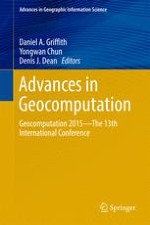2017 | OriginalPaper | Buchkapitel
Application of Spatio-Temporal Clustering For Predicting Ground-Level Ozone Pollution
verfasst von : Mahdi Ahmadi, Yan Huang, Kuruvilla John
Erschienen in: Advances in Geocomputation
Aktivieren Sie unsere intelligente Suche, um passende Fachinhalte oder Patente zu finden.
Wählen Sie Textabschnitte aus um mit Künstlicher Intelligenz passenden Patente zu finden. powered by
Markieren Sie Textabschnitte, um KI-gestützt weitere passende Inhalte zu finden. powered by
